 
 Main Menu
Main Menu
|
 Nevada Classics
Nevada Classics
|
 Advertise at CC
Advertise at CC
|
 February 2025
February 2025
|
| S |
M |
T |
W |
T |
F |
S |
| |
|
|
|
|
|
1 |
| 2 |
3 |
4 |
5 |
6 |
7 |
8 |
| 9 |
10 |
11 |
12 |
13 |
14 |
15 |
| 16 |
17 |
18 |
19 |
20 |
21 |
22 |
| 23 |
24 |
25 |
26 |
27 |
28 |
|
|
 CC Advertisers
CC Advertisers
|
|

12-07-2010, 05:01 PM
|
 |
CC Member

|
|
|
Join Date: Apr 2009
Location: Little Rock area,
AR
Cobra Make, Engine: ERA Street Roadster #782 with 459 cu in FE KC engine, toploader, 3.31
Posts: 4,527
|
|

 Not Ranked
Not Ranked
 Do piston rings rotate on the piston?
Do piston rings rotate on the piston?
Help, I'm trying to regain my equilibrium. I'm nearly 60 years old and I read a post on another forum where the writer asserted that piston rings rotate on the piston due to torque imparted by the cross-hatch honing on the cylinder walls. He seemed very sincere and confident in this. If by any chance this is so, I'm trying to figure out how I've never known this from messing around with muscle cars and light engine work since I was 18 - but I'm not a master mechanic by any stretch.
I asked him how the ring knew which way to rotate since the cross-hatching from the honing ran both clockwise and counter-clockwise due to the hone cycling up and down - but that didn't throw him off his stance.
I kept waiting for someone else to step in and say, yep - that's right, or nope - that's BS. But no one ventured another opinion.
So, do piston rings rotate as the piston cycles up and down? If so I wouldn't think it would be all that big a deal to assemble a ring package on a piston with the gaps all lined up. A few cycles and they would be spread around anyway.
Last edited by DanEC; 12-07-2010 at 05:04 PM..
|
-
Advertising


12-07-2010, 05:05 PM
|
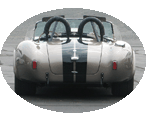 |
Half-Ass Member

|
|
|
Join Date: Jun 2005
Cobra Make, Engine: ERA #732, 428FE (447 CID), TKO600, Solid Flat Tappet Cam, Tons of Aluminum
Posts: 22,017
|
|

 Not Ranked
Not Ranked
I call "BS." Why would you go to the effort of spacing the ring gaps appropriately if the rings just start spinning when the engine starts?  |

12-07-2010, 05:34 PM
|
|
CC Member

|
|
|
Join Date: Dec 2001
Location: Louisville,
KY
Cobra Make, Engine: I'm Cobra-less!
Posts: 9,417
|
|

 Not Ranked
Not Ranked
Yep, they sure do.
|

12-07-2010, 05:42 PM
|
 |
CC Member

|
|
|
Join Date: Jan 2008
Location: Williamsport,
PA
Cobra Make, Engine: Kellison Stallion 468 FE
Posts: 2,703
|
|

 Not Ranked
Not Ranked
piston rings on a 4 stroke engine rotate, where rings on a 2 stroke are usually pinned in place
__________________
Fred B
|

12-07-2010, 05:43 PM
|
 |
6th Generation Texan

|
|
|
Join Date: Feb 2002
Location: Devil's Backbone,RR 32,
TX
Cobra Make, Engine: Lone Star Classics #240,Candy Apple Red,Keith Craft 418w - 602 HP,584 TQ
Posts: 8,157
|
|

 Not Ranked
Not Ranked
Yep,they do rotate.
|

12-07-2010, 05:48 PM
|
 |
CC Member

|
|
|
Join Date: Jan 2008
Location: Williamsport,
PA
Cobra Make, Engine: Kellison Stallion 468 FE
Posts: 2,703
|
|

 Not Ranked
Not Ranked
this is some tech from a abrasive manufacturer
Crosshatch
Crosshatch is also important because the amount, depth and angle of the crosshatch in the cylinder bores determines how much lubrication the rings receive and the rate of ring rotation.
Excessive shallow crosshatch angles can hinder or slow down the necessary ring rotation that allows the rings to dissipate heat. It can also leave too much oil on the cylinder wall allowing the rings to skate over the surface and the engine to use oil. Too steep of a crosshatch angle may not provide enough oil retention and can result in dry starts and premature ring wear. A steep crosshatch angle can also create excessive ring rotation that accelerates ring and piston groove wear.
Ring manufacturers typically recommend a crosshatch angle of 22° to 32° as measured from horizontal and uniform in both directions.
__________________
Fred B
|

12-07-2010, 05:49 PM
|
|
CC Member

|
|
|
Join Date: Dec 2001
Location: Louisville,
KY
Cobra Make, Engine: I'm Cobra-less!
Posts: 9,417
|
|

 Not Ranked
Not Ranked
Ok....next question...  |

12-07-2010, 05:51 PM
|
 |
Half-Ass Member

|
|
|
Join Date: Jun 2005
Cobra Make, Engine: ERA #732, 428FE (447 CID), TKO600, Solid Flat Tappet Cam, Tons of Aluminum
Posts: 22,017
|
|

 Not Ranked
Not Ranked
Quote:
Originally Posted by blykins

Ok....next question...  |
Why separate the ring gaps if they just start spinning anyway? |

12-07-2010, 05:51 PM
|
|
CC Member

|
|
|
Join Date: Aug 2010
Location: San Antonio Valley Ca,
ca
Cobra Make, Engine:
Posts: 1,275
|
|

 Not Ranked
Not Ranked
If you buy the really high end rings , they will swap from the weak cylinder to the stronger to keep compression equal. 
Actually , I would say they travel around a bit as there is nothing to stop them but I'd also say they don't move very much. |

12-07-2010, 05:55 PM
|
|
CC Member

|
|
|
Join Date: Dec 2001
Location: Louisville,
KY
Cobra Make, Engine: I'm Cobra-less!
Posts: 9,417
|
|

 Not Ranked
Not Ranked
Quote:
Originally Posted by patrickt

Why separate the ring gaps if they just start spinning anyway?
|
That's a good question that a lot of people don't have an answer to, and I don't know if I do either.
It is cool though....if you do some SAE research, you'll find that they can rotate up to around 10 rpms depending on several variables. Sometimes they can rotate at 1 rpm or slower.
The ring manufacturers always give their recommendations as to where to put the rings....so I do as I'm told and go with it. 
When you jerk an engine apart though, the gaps can be all over the place. |

12-07-2010, 05:59 PM
|
 |
Senior Club Cobra Member

|
|
|
Join Date: Jul 2001
Location: Carrollton,
TX
Cobra Make, Engine: JBL now SOLD
Posts: 1,735
|
|

 Not Ranked
Not Ranked
For the oil rings, they sometimes are pinned so no rotation on those.
__________________
6th generation Texan....
|

12-07-2010, 06:15 PM
|
 |
CC Member

|
|
|
Join Date: Apr 2009
Location: Little Rock area,
AR
Cobra Make, Engine: ERA Street Roadster #782 with 459 cu in FE KC engine, toploader, 3.31
Posts: 4,527
|
|

 Not Ranked
Not Ranked
Well, I'll be bumfuzzled. I never knew that (unless I forgot it and can't remember).  Still like to understand what governs the direction the rings rotate considering the cross-hatch pattern which would pull them in both directions at once.  |

12-07-2010, 06:16 PM
|
 |
Half-Ass Member

|
|
|
Join Date: Jun 2005
Cobra Make, Engine: ERA #732, 428FE (447 CID), TKO600, Solid Flat Tappet Cam, Tons of Aluminum
Posts: 22,017
|
|

 Not Ranked
Not Ranked
Quote:
Originally Posted by DanEC

Well, I'll be bumfuzzled. I never knew that (unless I forgot it and can't remember).  Still like to understand what governs the direction the rings rotate considering the cross-hatch pattern which would pull them in both directions at once.  |
It probably depends on what hemisphere of the globe you're in. You know, like flushing the potty....  |

12-07-2010, 06:23 PM
|
|
CC Member

|
|
|
Join Date: Mar 1999
Location: penn.,
Posts: 2,559
|
|

 Not Ranked
Not Ranked
|

12-07-2010, 06:40 PM
|
 |
CC Member

|
|
|
Join Date: Apr 2009
Location: Little Rock area,
AR
Cobra Make, Engine: ERA Street Roadster #782 with 459 cu in FE KC engine, toploader, 3.31
Posts: 4,527
|
|

 Not Ranked
Not Ranked
Quote:
Originally Posted by mr bruce

|
I skimmed over the article and didn't see anything specific about ring rotation - but a good article. However, I've been to Google now and I wish I had done that before posting. Do I feel ignorant. Now I have to work on restoring my equilibrium. |

12-07-2010, 06:44 PM
|
 |
CC Member

|
|
|
Join Date: Apr 2009
Location: Little Rock area,
AR
Cobra Make, Engine: ERA Street Roadster #782 with 459 cu in FE KC engine, toploader, 3.31
Posts: 4,527
|
|

 Not Ranked
Not Ranked
Quote:
Originally Posted by patrickt

It probably depends on what hemisphere of the globe you're in. You know, like flushing the potty....  |
 You know that's about as good a theory as any I've heard. I like it better than the cross-hatched hone theory. |

12-07-2010, 07:02 PM
|
|
CC Member

|
|
|
Join Date: Aug 2010
Location: San Antonio Valley Ca,
ca
Cobra Make, Engine:
Posts: 1,275
|
|

 Not Ranked
Not Ranked
One thing I really like about these forums is that there is always something new to be learned. Being able to share and receive knowledge from you guys is wonderful. How did we ever get questions answered before the internet?
|

12-07-2010, 07:09 PM
|
 |
CC Member

|
|
|
Join Date: May 2008
Location: Brisbane,
QLD
Cobra Make, Engine:
Posts: 2,797
|
|

 Not Ranked
Not Ranked
Quote:
Originally Posted by patrickt

It probably depends on what hemisphere of the globe you're in. You know, like flushing the potty....  |
Quote:
Originally Posted by DanEC

 You know that's about as good a theory as any I've heard. I like it better than the cross-hatched hone theory. |
Agree there, a hard to explain phenomenon, but happens on every four stroke engine.
Hence why 2 strokes run pegged rings.
Some four strokes (Subaru comes to mind) run pegged oil rings.
__________________
Gary
Gold Certified Holden Technician
|

12-07-2010, 07:20 PM
|
 |
CC Member

|
|
|
Join Date: Aug 2007
Location: NE Oklahoma,
OK
Cobra Make, Engine: Fords
Posts: 544
|
|

 Not Ranked
Not Ranked
they rotate, but I doubt the crosshatch has anything to do with it.
Z.
__________________
'65 K code Mustang
'66 Galaxie 500
|

12-07-2010, 07:40 PM
|
|
CC Member

|
|
|
Join Date: May 2006
Location: St. Louisville,
Oh
Cobra Make, Engine: A&C 67 427 cobra SB
Posts: 2,445
|
|

 Not Ranked
Not Ranked

Quote:
Originally Posted by FWB

this is some tech from a abrasive manufacturer
Crosshatch
Crosshatch is also important because the amount, depth and angle of the crosshatch in the cylinder bores determines how much lubrication the rings receive and the rate of ring rotation.
Excessive shallow crosshatch angles can hinder or slow down the necessary ring rotation that allows the rings to dissipate heat. It can also leave too much oil on the cylinder wall allowing the rings to skate over the surface and the engine to use oil. Too steep of a crosshatch angle may not provide enough oil retention and can result in dry starts and premature ring wear. A steep crosshatch angle can also create excessive ring rotation that accelerates ring and piston groove wear.
Ring manufacturers typically recommend a crosshatch angle of 22° to 32° as measured from horizontal and uniform in both directions. |
Can someone please explain how a ring rotating is going to dissipate heat? Unless explained, I say myth busted.
If the cross hatch is perfectly uniform in both directions, the drag forces of the cross hatch will be equal in both directions, therefore the opposing forces will cancel, yielding no rotation.
I have pulled engines back down, and the rings had moved. Yes, I believe they can rotate. I also pulled an engine down that burned oil from day one, with ~5000 miles on it. All ring gaps were in a straight line on all 8 pistons, as the assembler admitted he did and didn't know any better.
I suspect they move because the cross hatch is not perfect. I do not believe they rotate at any considerable speed by design or necessity. Where is myth busters when you need them? I'm not a believer that they need to rotate or for that matter that they continuously rotate. I'm thinking it is kinda random.
Well second thought some movement might be nice to keep the gaps from wearing a line in the cylinder. So some movement is desirable.
Happy to be proved wrong and open minded to learn.
Last edited by olddog; 12-07-2010 at 07:51 PM..
|
 Posting Rules
Posting Rules
|
You may not post new threads
You may not post replies
You may not post attachments
You may not edit your posts
HTML code is Off
|
|
|
All times are GMT -7. The time now is 08:56 AM.
|




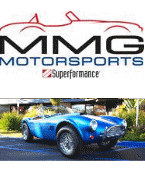


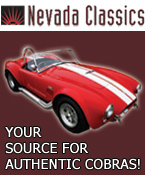
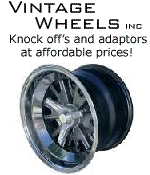
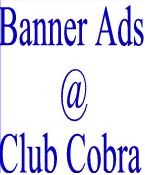
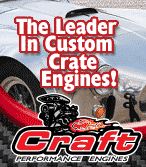
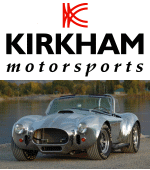

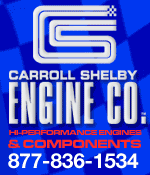












 Still like to understand what governs the direction the rings rotate considering the cross-hatch pattern which would pull them in both directions at once.
Still like to understand what governs the direction the rings rotate considering the cross-hatch pattern which would pull them in both directions at once.
 You know that's about as good a theory as any I've heard. I like it better than the cross-hatched hone theory.
You know that's about as good a theory as any I've heard. I like it better than the cross-hatched hone theory. Linear Mode
Linear Mode



